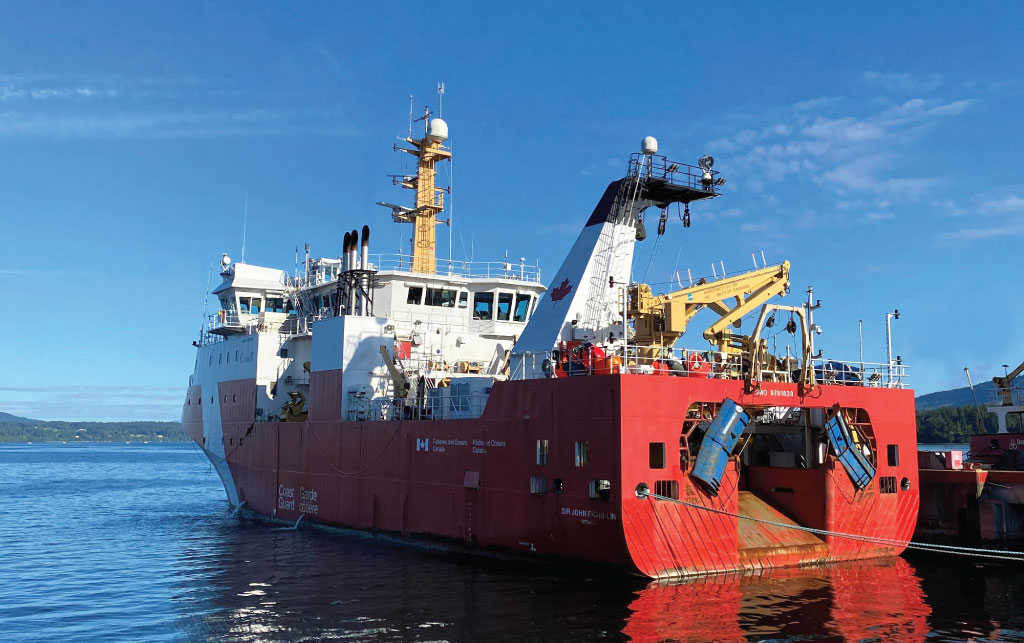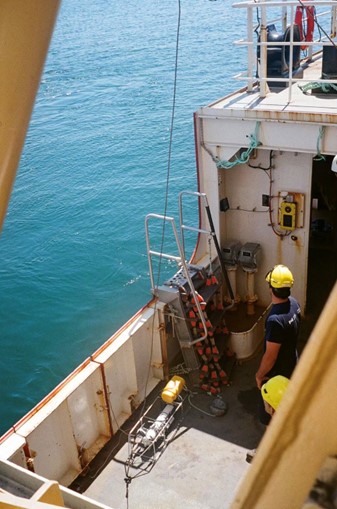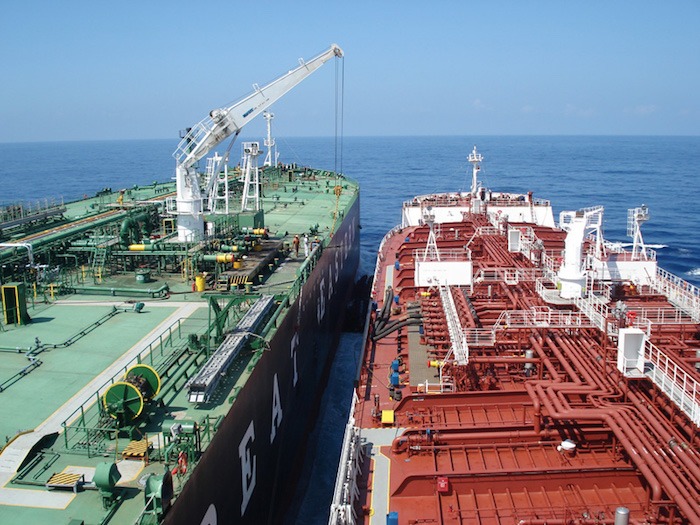
During summer 2023, two Clear Seas’ staff members were given the opportunity to go aboard the Canadian Coast Guard Ship (CCGS) Sir John Franklin on a research mission with the MELO Project. Chanessa Perry, an intern with Clear Seas’ Indigenous Internship Program, and Tessa Coulthard, one of Clear Seas’ research associates, learned what it is like to work on a Canadian Coast Guard research vessel, and witnessed scientific research in action while sailing through Boundary Pass in the Pacific Ocean. This journal entry will bring you along on Chanessa and Tessa’s adventure on the CCGS Sir John Franklin
The Institute of Ocean Sciences (IOS) is located on the Saanich Peninsula, on Vancouver Island, just a ferry ride away from Vancouver. This internationally recognized facility supports Fisheries and Oceans Canada’s (DFO) research on the coastal waters of British Columbia, the Northeastern Pacific Ocean, navigable fresh waters of the west coast east to the Alberta border, and the Western Canadian Arctic. We are greeted by a friendly employee who shows us how to get down to the docks and the research vessel. The docks are busy with Canadian Coast Guard employees getting multiple vessels prepared for their voyages – even at 8AM, there is a lot going on at IOS. We are here to conduct research with the MELO Project team from the University of British Columbia (UBC). The rest of the research team from UBC (11 people in total!) arrives shortly afterwards and meets us down at the dock right in front of the CCGS Sir John Franklin. Coming from Vancouver, they took the earliest possible ferry over to IOS that morning and brought with them all the equipment they needed for the research campaign. We load up the gear and make our way up the metal ramps and stairs to board the vessel. The research trip we have been looking forward to all summer is finally here.
The MELO Project team needs this time onboard the research vessel to gather acoustic data by transiting overtop an array of hydrophones located underwater in Boundary Pass. As the vessel passes over the hydrophones, the level of noise is recorded by the hydrophones and sent to a computer to be processed.
Since the noise a vessel makes changes based on certain factors (such as speed or mechanical configurations), the team plans to make 13 passes over the same hydrophone array at varying speeds. The acoustic data from the hydrophones will be used by the MELO Project team as real-world parameters to a computational model.
The MELO team are working on building a computational model that can be used to predict the noise signature of vessels based on the operating parameters. They will use the data to validate their current model and determine if they can successfully predict the noise signature of the CCGS Sir John Franklin, based on their understanding of the ship, the speed, the oceanographic conditions, and other factors. In addition to collecting acoustic data through hydrophones, the research team also plans to gather oceanographic data and take some measurements of vibrations on some of the machinery in the engine room. More on that later!

For most of the research team, it is their first time on a larger vessel that is not a passenger vessel, like a ferry or cruise ship. The CCGS Sir John Franklin, built in 2015, is a newer vessel in the Coast Guard fleet. As a research vessel, it is mainly used by DFO scientists for fish surveys along the coast. We are impressed with the size of the vessel, and how well equipped it is for so many different types of research. Almost like a maze, with so many corridors and small connecting rooms, it is easy to get lost exploring the different decks, but there is always a crew member around to point you in the right direction.
At 9AM, the vessel leaves the dock and heads into Boundary Pass—we have set sail!
After settling into our cabins, we join Capt. Jeff and Lily, one of the crew members, for a safety demonstration on the bridge. Lily gives a routine explanation on the safety procedures aboard the vessel. She highlights the importance of watching our steps, closing doors properly, and asking a crew member for help if we do not know what to do in any situation. Lily also wants to ensure that everyone is respectful of the crew that may be sleeping during the day, since they work long hours and need to be well-rested to perform their duties. We learn a lot about how the ship runs, the jobs of the crew members and how to stay safe on the vessel. We head back to our bunks to get sorted before lunchtime and prepare for a long day of research on the water. There are five double cabins with bunk beds set aside for the research team, and one single cabin for the head scientist. Although a little tight, the cabins are very comfortable, and the bunk beds make it feel a bit like summer camp. We look forward to being rocked to sleep by the waves that evening.

